Most of us know Ravana as the villain from the Ramayana. But in some parts of India and Sri Lanka, he is still worshipped today. These communities see him differently. They consider him as a great scholar, a devoted follower of Lord Shiva and a skilled ruler.
This journey takes you to 5 places where Ravana worship continues. These places will challenge our notion of good and evil in Indian traditions.
Why Do People Worship Ravana?
Before we visit these places, let’s understand why Ravana has devotees. Despite being Ram’s enemy, Ravana had many great qualities:
- He knew all the Vedas and scriptures
- He was an excellent musician who created the Ravana Veena
- He was completely devoted to Lord Shiva
- He ruled Lanka with great skill
- His knowledge of religion was unmatched
These are the reasons for Ravana worship in various communities.
1. Bisrakh Village, Uttar Pradesh – Where Dussehra Is Never Celebrated
Location: Near Greater Noida, Uttar Pradesh
Bisrakh village always claims to be the birthplace of Ravana. So what is it about this place? The villagers will not let us celebrate Dussehra. They will not burn an effigy of Ravana or celebrate his death.
In the village, there is an ancient temple to Ravana. The local people perform daily worship at it because they believe Ravana was their ‘king.’ To celebrate his defeat would mean bad luck upon their families.
This belief has stayed strong for centuries. The villagers have passed down stories about Ravana through generations. They see him as a great ruler, not a villain.
What you’ll find here:
- Ancient Ravana temple
- No Dussehra celebrations
- Strong family traditions
- Stories passed down for generations
2. Dashanan Temple, Kanpur – Opens Only on Dussehra
Location: Shivala area, Kanpur, Uttar Pradesh
The Dashanan Temple located in Kanpur features a distinct tradition as it only opens its doors on the Dussehra day. As the rest of India celebrates the defeat of Ravana, the devotees worship him at the Dashanan Temple.
The temple which was built of wood 125 years ago, has a 10 foot tall idol of Ravana, and hundreds of people visit the temple on Dussehra. They pray there for knowledge and wisdom. Next door to the Dashanan Temple is a Shiva temple, which shows the connection of Ravana to Lord Shiva.
Devotees believe they can receive learning from the spirit of Ravana and acknowledge his scholarly accomplishments rather than his being the enemy of Ram.
Special features:
- Opens only on Dussehra
- 10-foot Ravana idol
- 125 years old
- Located near Shiva temple
You may also like to visit famous ISKCON Temple in Delhi.
3. Ravangram Village, Madhya Pradesh – An Entire Community of Devotees
Location: Near Vidisha, Madhya Pradesh
Ravangram may be the most extensive example of Ravana worship in the country. This village serves the purpose of worshipping a demon king! The village, which cares deeply about Ravana, has shaped its religious identity around him.
The village temple is the heart of spirituality. The devotion of regular prayers and festivals honor Ravana’s accomplishments, and regular prayers to Ravana, the villagers outright reject the well-known narrative that portrays Ravana as entirely evil. They think it is extremely unfair that he is portrayed as the villain in many mainstream stories.
Their worship acknowledges Ravana’s positive qualities and believe him to be a learned king, musician, and a spiritual seeker.
Community practices:
- Whole village dedicated to Ravana
- Regular community festivals
- Focus on scholarly achievements
- Alternative view of Ramayana
You should also explore Shri Mahakaleshwar Jyotirlinga Temple.
4. Thiru Koneswaram Temple, Sri Lanka – Where Shiva Blessed Ravana’s Devotion
Location: Trincomalee, Eastern Province, Sri Lanka
According to the legends, the sage Agastya built this temple at the behest of Lord Shiva, who was mindful of Ravana’s devotion. This temple commemorates their special relationship between a god and devotee.
This was a place where Ravana and his mother worshipped Lord Shiva, and the temple reminds many of Ravana’s spiritual nature. The temple represents the essence of Ravana’s spirituality and devotion and religiousness.
Pilgrims also come here to worship Shiva and a devotee of him. The temple creates a different space and frames the conversation about Ravana through the lens of respect for his devotion.
Religious importance:
- Built to honor Ravana’s devotion
- Ancient pilgrimage site
- Combines Shiva and Ravana worship
- Shows Ravana’s spiritual side
Do you know the history of the Jagannath Temple Puri?
5. Muneeswaram Temple, Sri Lanka – The Ancient Sanctuary
Location: Chilaw, North Western Province, Sri Lanka
The Muneeswaran Temple is very old. It is supposed to have existed before Rama went to Lanka. The name suggests this Shiva temple existed a long time before the events of the Ramayana.
This temple shows Ravana’s role in establishing religious traditions in Lanka. His connection to this place gives meaning to devotees. They see him as someone who protected and promoted religious practices.
This temple attracts pilgrims who want to learn about the spiritual traditions of ancient Lanka. The link with Ravana enhances it even more.
Historical value:
- Older than Ramayana period
- Ancient Shiva worship center
- Connected to Ravana’s legacy
- Important pilgrimage site
Learn about the Kamakhya Temple in Assam, one of the most famous temples in India.
The Philosophy Behind Ravana Worship
Ravana’s worship in these five places shows a deeper understanding of morality. These traditions teach us that people are complex. No one is completely good or completely evil.
Ravana worship celebrates:
- Learning: His mastery of scriptures
- Music: His musical genius
- Devotion: His love for Lord Shiva
- Leadership: His ruling skills
- Spirituality: His religious knowledge
Why This Matters Today
These traditions are important because:
- They preserve different views
- Keep cultural diversity alive
- Make us think deeply about right and wrong
- Save traditions that might disappear
Learn about the Brihadeshwara Temple in Tamil Nadu, one of the great temples of South India.
Planning Your Visit
Each place is different:
- Bisrakh Village: Visit anytime except Dussehra to see daily worship and meet villagers.
- Kanpur Temple: Go on Dussehra day for the unique experience of Ravana worship.
- Ravangram: Visit throughout the year to understand their complete approach to Ravana worship.
- Sri Lankan Temples: Visit both temples to understand Ravana’s spiritual legacy.
Experience Sacred Ravana Worship Sites with Japji Travel
Are you excited to visit these unique spiritual destinations? Japji Travel focuses on building meaningful journeys that lead to spiritual experience rather than tourism. Our expert guides have in-depth familiarity with the rich cultural foundation of Ravana worship traditions.
Why Choose Japji Travel for Your Spiritual Journey?
- Expert Local Guides: You’ll learn the history and traditions of each worship place with our guides, you’ll be guided respectfully to connect with local communities.
- Customized Itineraries: We do tours based on your interests. You may want to visit all 5 worship sites, or regional ones where you’re interested in.
- Cultural Sensitivity: We will ensure you to experience these sacred and meaningful traditions with respect and understanding.
- Complete Support: We take care of the logistics from transportation to accommodation at or close to these remote temples.
Know more about Khatu Shyam Mandir in Rajasthan, a holy temple dedicated to Lord Shyam.
Special Ravana Worship Tour Packages:
- 🕉️ North India Ravana Circuit: Visit Bisrakh, Kanpur and Ravangram all on one complete trip
- 🏛️ Sri Lanka Spiritual Journey: Visit Koneswaram and Muneeswaram temples with culture commentary
- 🌍 Complete Ravana Heritage Tour: Visit all five places located in India and Sri Lanka
Book Your Spiritual Journey Today! Get in touch with Japji Travel and we will help you create a customized tour to worship Ravana. Let us help you experience these amazing traditions that challenge ordinary thinking and expand your spirituality.
📞Call us or check out the website and begin to plan your unique spiritual journey.
What These Places Teach Us
The five places where Ravana is worshipped today teach us something important: that accounts can have multiple perspectives. These diverse communities preserve traditions that confront dominant narratives.
Whether we look at his learning, spiritual practices or cultural significance, Ravana worship reminds us that every story has multiple sides. These places keep alternative narratives alive.
They preserve the diversity that makes Indian spiritual traditions so special. By understanding these traditions we learn to appreciate complexity in human nature.
Tips for Understanding Ravana Worship
When you visit these places:
- Keep an open mind
- Respect local customs
- Ask questions politely
- Learn the history
- Understand different views
The Lasting Impact
These five places are still thriving. They keep stories alive that would otherwise be forgotten. The worship of Ravana’s soul shows us the power of alternative narratives.
These traditions remind us that human nature is complex. They make us think beyond good and evil. In our times, this lesson is more important than ever.
The devotees at these places don’t worship evil. They worship knowledge, devotion and complexity. Their traditions add depth to mythology and spirituality.
Final Thoughts
Visiting Ravana temples is a spiritual experience. These places ask us to look beyond the stories. They add depth to Indian culture.
Each temple and village tells a part of Ravana’s story. Together they give us the complete picture of why some people worship and not condemn this complex character.
These places remind us that every tradition deserves respect and understanding. They show us that diversity in spirituality makes our world more interesting.
Have you visited any Ravana temples? Comment below and help others understand these traditions better.
Frequently Asked Questions About Ravana Worship
Ravana is worshipped because he was a great devotee of Shiva, a great scholar, a capable ruler and a Veena maestro. His 10 heads represent his knowledge in six Shastras and four Vedas. Many communities focus on his scholarly achievements and spiritual devotion rather than his role as Ram’s enemy.
No, it’s not wrong. Ravana is worshipped on Dussehra to respect his skills and to ward off evil, as he was a scholar and devotee of Lord Shiva. Different communities have different traditions and Ravana worship is an alternative spiritual perspective that’s equally valid.
Ravana is worshipped by Hindus in Bisrakh (claimed as his birthplace), by Sachora Brahmins of Gujarat who claim descent from him, and by Gondi people of central India who have temples for him and his family. Major worship centers include Uttar Pradesh, Madhya Pradesh, and parts of Gujarat.
This is a misconception – Ravana is worshipped not only in South India but also in many other states of India and countries like Sri Lanka. Surprisingly, the Ravana birthplace is claimed to be in North India. Ravana worship exists across different regions regardless of North-South divisions.
Devotees pray to Ravana for knowledge, wisdom, and scholarly success. Followers believe that worshipping will bring unparalleled peace and prosperity into their lives. They focus on his mastery of scriptures, musical talents, and devotion to Lord Shiva rather than his mythological conflicts.
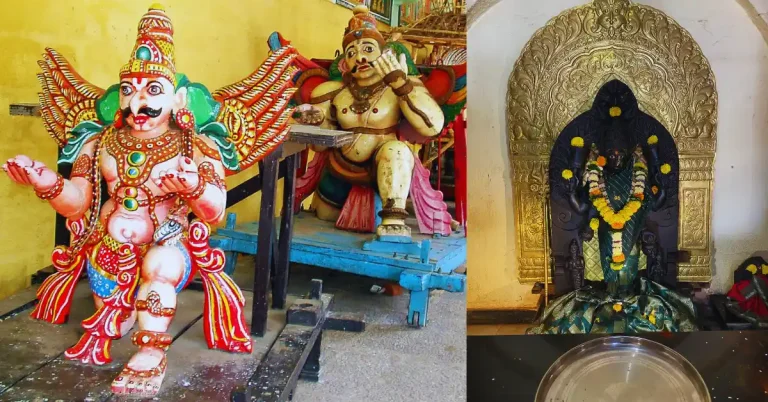

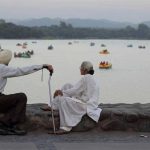
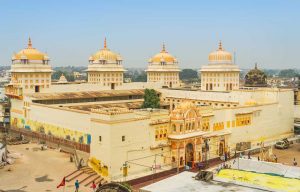
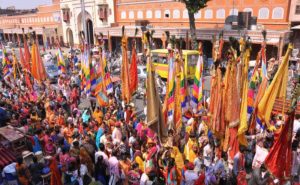
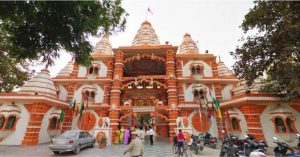
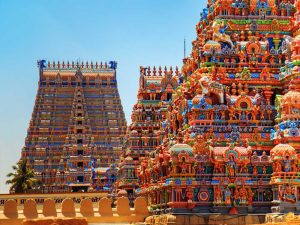
You must be logged in to post a comment.